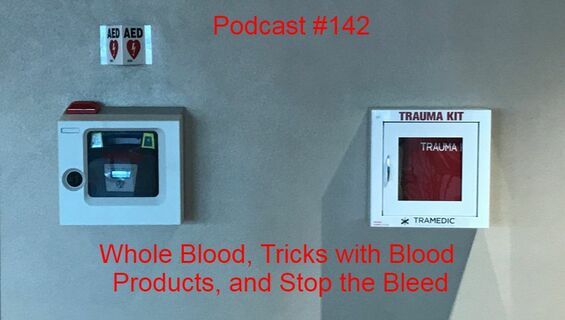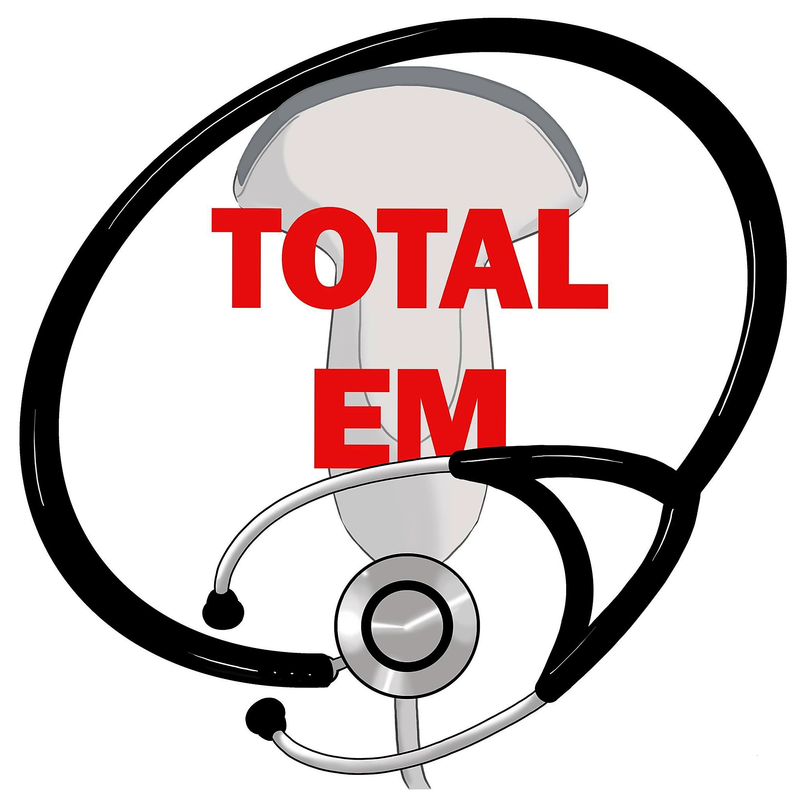|
Andrew Fisher is not your typical medical student. In addition to his EMS background, he was a PA in the military. Now, he is in his third year of medical school and has a passion for education. This is especially true when it comes to blood products.
What is Andy's preferred type of blood product? Whole blood! Specifically, low titer O (positive or negative depending on situation) whole blood. Generally, low titer means low IgM anti-A and anti-B levels which dates back to World War II when levels less than 256 were unlikely to result in a transfusion reaction no matter the patient's blood type. In Europe, IgG is still being used.
Whole blood has a relatively short lifespan. It is packaged with citrate-phosphate- dextrose (CPD) which has a 21 day shelf life and CPD-adenine (CPDA-1) which has a 35 days shelf life. Usually, the whole blood is first held in places less likely to use it (like in the field) and then brought back to a major trauma center to avoid waste. Not everyone needs O negative blood. Women of childbearing age is most appropriate. Children are generally recommended to also get O negative blood especially in females. RhoGAM can theoretically be used after the female of childbearing age received positive blood. However, both the RhoGAM and the blood use in children has very limited evidence and is more theoretical. Whole blood is still not widely available, so what should we give if it is not available? The more recent evidence is for 1:1:1 ratio of packed red blood cells (PRBCs), fresh frozen plasma (FFP), and platelets. If only one thing could be accessed first, Andy recommended plasma first given its versatility and benefits in trauma such as plasma can help replace some of the clotting factors and increase intravascular volume. People can live with being anemic for a period of time and still carrying oxygen with the remaining blood, but volume and clotting is more important. Also, if blood is not being clotted, the oxygen carrying PRBCs will most likely just end up on the floor. In general, crystalloid fluids are not needed in early resuscitation. They may be needed to help facilitate the massive transfusion protocol especially if whole blood is not present. However, it may be needed to facilitate the delivery of medications such as calcium, tranexamic acid (TXA), and antibiotics. The risks of hypocalcemia are significant and it is better to give 1-2 grams of calcium at the early stages of transfusion such as after the first couple of products are given or sooner. Both calcium chloride and TXA could be given together but this has not been fully tested. Make sure to check out Stop The Bleed and get involved. May is Stop The Bleed Month and we as healthcare professionals can play a pivotal role by encouraged our public officials, citizens, and other agencies to learn hemorrhage control which can be lifesaving until those patients can get to definitive care. As a fun side note, check out a page dedicated to Andy called Saint Fisher Church of Evidence Based Medicine which will give you a chuckle while being educational. Let us know what you think by giving us feedback here in the comments section or contacting us on Twitter or Facebook. Remember to look us up on Libsyn and on iTunes. If you have any questions you can also comment below, email at [email protected], or send a message from the page. We hope to talk to everyone again soon. Until then, continue to provide total care everywhere.
0 Comments
Leave a Reply. |
Libsyn and iTunesWe are now on Libsyn and iTunes for your listening pleasure! Archives
August 2022
Categories |
||||||


 RSS Feed
RSS Feed